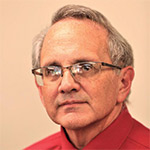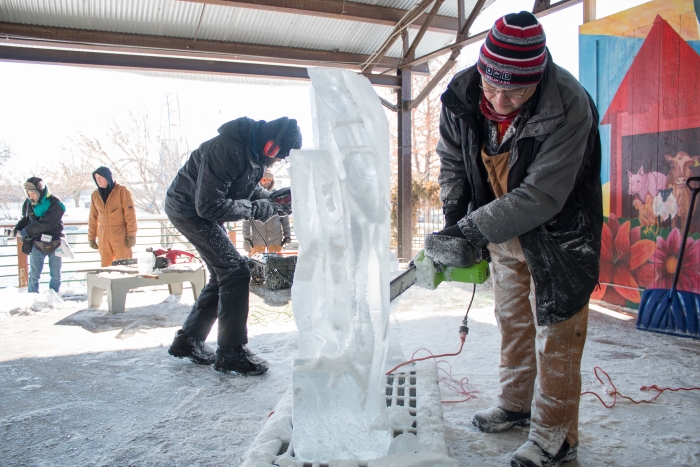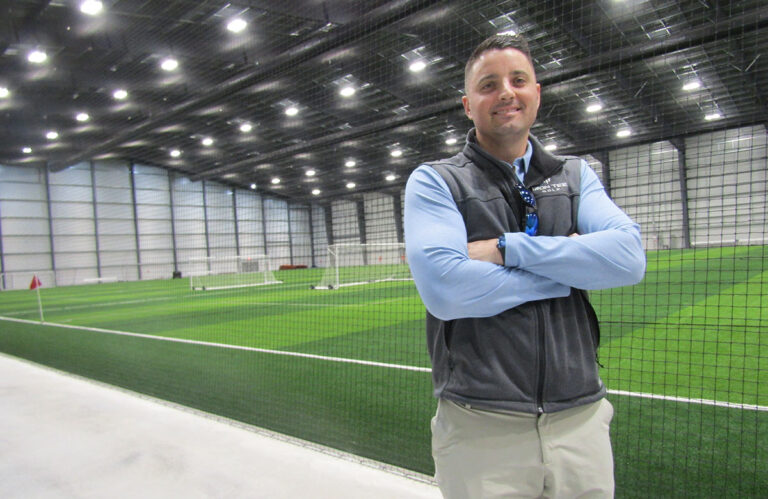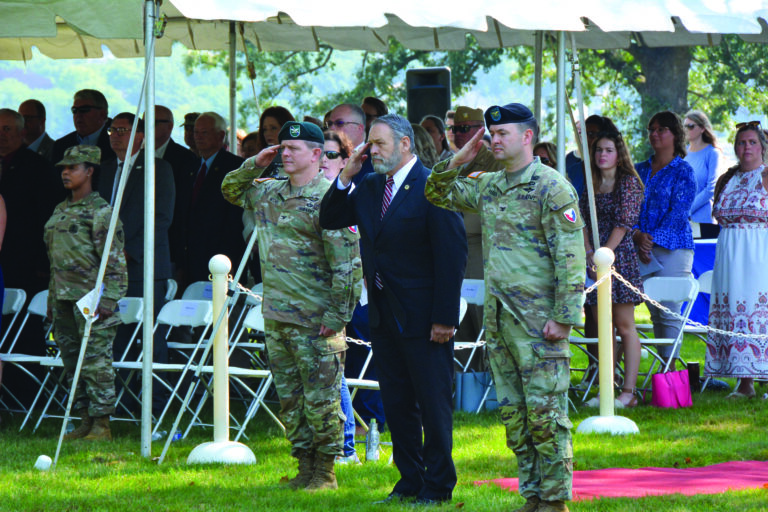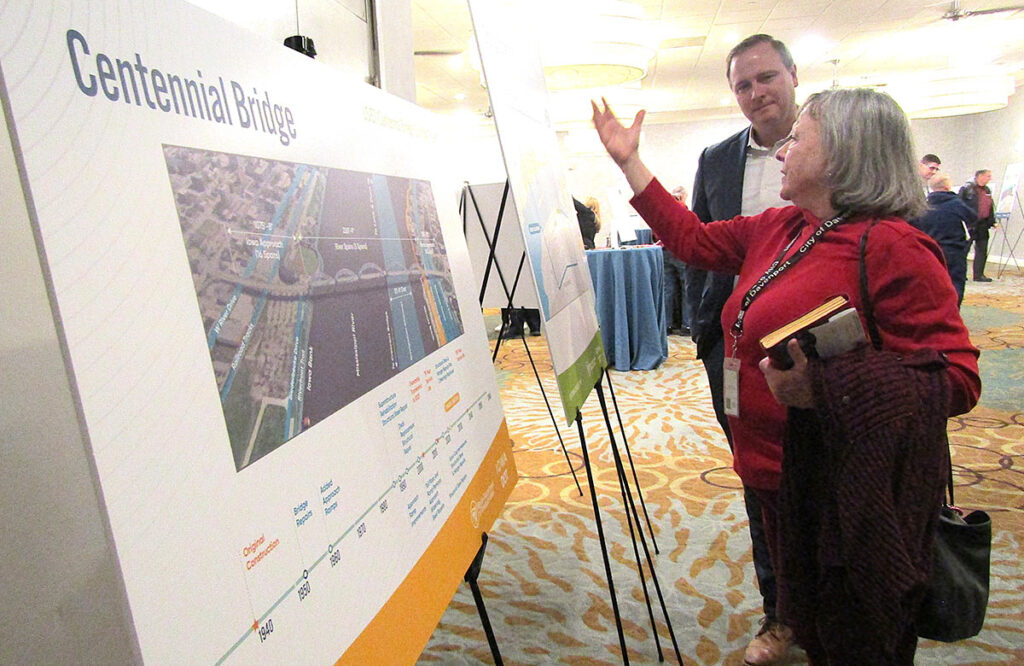
Marion Meginnis, Davenport 3rd Ward alderman and mayor pro-tem, looks over some of the potential plans to improve the Centennial Bridge during a public meeting Thursday, April 17, at the Holiday Inn Rock Island.
The first steps have been taken in a long journey that will determine the fate of the 85-year-old Centennial Bridge that spans downtown Davenport and Rock Island.
Hundreds of Quad Citians attended the first public meeting Thursday, April 17, to discuss the potential plans for repairing or replacing the bridge, scheduling and next steps forward to improving the structure.
…

Want to Read More?
Get immediate, unlimited access to all subscriber content and much more.
Learn more in our subscriber FAQ.
Do you want to read and share this article without a paywall?
